With the iPhone-connected drone craze in full effect, AppleInsider decided to put to the test one of the most advanced, Apple-friendly prosumer aerial cameras available today: the DJI Phantom 2 Vision.
Like many other drones, the Phantom 2 Vision is a radio-controlled quadcopter that connects with Apple's iOS ecosystem of devices. But unlike many other options, it includes a dedicated physical controller, a stabilized HD fisheye-lens camera, GPS positioning for steady flight and emergency returns, and a Wi-Fi booster to aid connectivity with an iPhone or iPad at long range.
It's this added functionality that places the DJI model at the higher end of the consumer-level drone market, both in terms of specifications and price. While a maxed-out Parrot AR Drone 2.0 Elite Edition, complete with HD camera and GPS, sells for $299.99, the DJI Phantom 2 Vision costs four times that, at $1,199.
In other words, while the Parrot Drone might be classified as a more recreational toy, the DJI Phantom lineup is intended for more serious users who want to shoot high-quality photos and video from the air.
For the purpose of this review, DJI loaned AppleInsider the standard Phantom 2 Vision package with an included 4 gigabyte micro SD card and a single smart battery. New orders of the Phantom 2 Vision are currently advertised to come with a free second battery, which we were not provided.
Tech specs
The Phantom 2 quadcopter boasts integrated GPS which allows for position holding, offering a more stable picture than competing drones. The GPS radio also allows the drone to automatically return home in the event that the drone loses connection with the controller.
The included Wi-Fi range extender, which is advertised to have a communication distance of 300 meters, connects to an app built for Apple's iPhone, allowing real-time viewing of the Phantom 2 Vision camera, as well as flight information such as distance, altitude, speed, battery level and GPS signal strength. The integrated camera can also be tilted up or down with the dedicated app, and videos and pictures can be snapped through the touchscreen controls.
The fisheye camera will snap 14-megapixel photos with field of view options ranging from 140 degrees to 90 degrees. It includes a 1/2.3" sensor size, while HD video can be recorded at 30 frames per second in 1080p, or 60 frames per second 1080i.
DJI says that a variety of 46MM lens filters are "coming soon," and will be attachable to the front of the camera lens, though we were not able to test these out. There is an official lens profile from Adobe available for the Phantom 2 camera, allowing users to remove lens distortion caused by fisheye.
Perhaps most impressive is that the Phantom 2 Vision manages to accomplish all of this on an advertised flight time of 25 minutes on a single 5200mAh LiPo battery charge. In our tests, we found that the drone does in fact live up to these estimates, though the connected app on our iPhone would begin warning us once the device reached less than one-third of its remaining charge, making us extra cautious in pushing the limits.
Cheaper versions of the Phantom lineup sans camera can be purchased, but they lack the tilt controls and stabilization features found with the built-in camera found on the Vision model. There are various mounts available that allow third-party cameras, such as a GoPro, to be attached to the bottom of the unit.
Setup
The DJI Phantom 2 Vision comes mostly assembled, with the high-definition camera already attached and minimal hardware-related effort required for takeoff. Inside the box are the drone, two sets of four plastic blades for flight, an advanced rechargeable battery, a dedicated physical controller, Wi-Fi signal booster to allow live video on an iPhone, and a clamp to hold the iPhone (or another smartphone) in place on the controller.
But before we took to the skies, we wanted to make sure we were running all of the latest software, lest we crash and break our $1,200 flying drone.
Updating the firmware on the Phantom itself was relatively simple. The unit has a micro USB port on the back that we plugged into our Mac, then we downloaded and launched the Phantom 2 Vision Assistant Software, which automatically updated everything as needed.
Everything seemed simple enough, until it was time to update the firmware on the controller itself. While an instructional video on DJI's site shows a micro USB port on the bottom of the controller, there was none to be found on our unit.
It was only after we read through the manual that we learned that some versions of the controller require disassembly to access the USB port inside the device. Once we discovered this, we took apart the controller, plugged it in to our Mac, and launched the Vision Assistant Software. Nothing.
Some searching around online revealed that updating the controller requires separate software, named Phantom RC Assistant Software. As it turns out, this application was not yet available for Mac.
Since our initial experience, DJI has in fact released a Mac-specific controller update. The company also informed us that new orders of the Phantom should feature an external USB port on the controller unit. We'll give them a pass on these issues, but our initial struggles should be noted.
While the firmware process was a bit of a headache with controller, setting up the Phantom drone itself was thankfully a great experience. The four plastic blades that lift the device into the air come with a rather ingenious design: The self-tightening blades can simply be screwed on by hand, allowing users to easily transport the unit without protruding blades, and then assemble and fly their drone on the go with minimal effort.
And while we wouldn't call the Phantom "small," it is portable enough that we could easily fit it inside of a backpack with the propellers removed and bring it with us on the go. Once we were at our destination, we simply attached the propellers, fired up the drone and remote, and took off with ease. Packing it back up requires a special wrench that helps remove the blades.
Control and flight
Let's get it out of the way: This thing is fun.
The DJI Phantom 2 Vision is stable in the air, it's fast, and it's incredibly easy to control. After a quick compass and GPS calibration, with completion signaled by colored lights on the back side of the drone, we were off and flying in no time.
The real key here is the physical controller, powered by four AA batteries, which allows for precise and comfortable control. In short, it's great and incredibly easy to figure out.
The left stick controls ascent and descent by pushing up and down, while the "yaw" of the drone can be rotated left or right accordingly. The right stick controls forward and backward motion, as well as strafing left or right.
Flying is a breeze. After carefully getting the Phantom airborne, we were soon zipping around, doing low flyovers, going under obstacles and bringing it in for a safe, soft landing.
We did notice that the Phantom was quick to lose GPS signal, but thankfully the unit notifies this not only on the iPhone app, but also through indicator lights on the back of the unit. We were surprised how easily it would lose signal with cover over head — for example, while flying under the Washington Square Arch in Manhattan, and under a low bridge in Central Park, the GPS connection was lost immediately.
The 25-minute flight time on a single charge was more than enough for us to get the kinds of shots we were interested in. For a professional or serious enthusiast, we think two fully-charged smart batteries would do the trick — Â 50 minutes should be enough time to get what you need.
The "smart" battery also includes its own LED lights on the back, allowing users to check the status of it before it's even plugged into the Phantom. The battery could be completely recharged in a little over an hour when plugged into the wall.
Camera quality on the integrated shooter was mostly good, though we found that the Phantom 2 Vision did not perform as well in low-light situations as a GoPro Hero3+ Black Edition. Video quality became somewhat grainy on an overcast day, but photos and video looked vibrant and great as long as we were shooting on a bright day.
In terms of braving the elements, we came away thoroughly impressed with the Phantom 2 Vision. We were at first reluctant to try the device on a snowy day in Manhattan, but searches online showed comments from users who said that their drone operated just fine even in rain (not that we would recommend doing this). So, we decided to give it a shot.
The Phantom not only handled snow and wind with ease, but it even fared impressively when we tested it in more extreme conditions: -25 Fahrenheit while in the mountains of Banff in Alberta, Canada. Exposed to these temperatures, our iPhone completely shut down and made us lose control of the camera, and yet the DJI Phantom 2 Vision kept right on flying with no troubles (though we kept it close by, just in case).
We did experience one low-altitude collision, where the propellers clipped an obstacle, and we're are happy to report that there was no visible damage to the unit. Just try not to get it stuck in a tree, or crashing into something at a high altitude, and we think you'll be OK pushing the limits with the Phantom.
iOS integration
The main reason we wanted to test the DJI Phantom 2 Vision was to see how it ties into Apple's iOS ecosystem. Once connecting to the signal of the Wi-Fi range booster attached to the top of the drone's remote control, we were able to launch the dedicated DJI Vision application on our iPhone 5s and see exactly what the Phantom's camera was seeing.
Setup and connection to the camera is relatively easy, though we found it sometimes had difficulty connecting if we did things out of order. For example, turning on the drone first, then the Wi-Fi repeater, then the controller would allow us to properly connect, but a few times we forgot and powered things on in the wrong order, we couldn't get our iPhone to connect.
There is a slight amount of lag in transmitting the live video over Wi-Fi to the iPhone, which is understandable. But the live video feed becomes incredibly important as the Phantom gets to high altitudes or far distances.
More than a few times, we flew the drone so high or so far away that it was nothing but a speck in the distance, and telling what direction it was facing was impossible. In these situations, we found ourselves relying on the live feed on our iPhone to pilot the drone, and in these instances it worked very well.
Piloting by iPhone is aided by onscreen indicators with a compass, altitude, speed, battery and more. We wouldn't want to try any advanced maneuvers in tight spaces while piloting via the iPhone, but for open areas at long or high distances, we could fly with confidence.
Controlling the camera via the iPhone application is also great. The camera can be tilted up or down with touchscreen controls, while shooting settings can also be changed. Users can of course snap pictures with a tap, or start and stop video recordings.
The DJI Vision app can also be used to transfer photos and videos from the camera to the iPhone's Photos application. Content is also stored onboard the unit with a micro SD card slot on the rear of the camera. While transferring pictures over Wi-Fi is acceptable, we imagine most users will copy large HD video files to their Mac or PC direct from the micro SD card.
Unfortunately, one feature we were really looking forward to testing isn't yet available. DJI plans to update its official iPad app to allow Phantom 2 owners to be able to chart a GPS path on a map, allowing the drone to fly a set course a number of times and giving videographers the ability to get the best shot possible.
There are some other DJI products that do offer this functionality, but an update for the company's iPad "Ground Station" app was not yet available during our testing. We believe this will be a great selling point for the product, if it works as advertised whenever it launches.
Conclusion
At $1,200, the DJI Phantom 2 Vision isn't cheap — Â but you get what you pay for. This drone is easy to fly, well made and durable, and really performs, whether at high altitudes or in low temperatures — or both simultaneously.
Anyone looking to casually fly a drone for fun and occasionally snap amazing aerial footage will automatically be turned off by the price tag. For those people, we recommend checking out the Parrot AR Drone ($299.99), which is the most common choice available today.
If you're a professional photographer, or someone who is especially serious about getting great aerial footage, though, the Phantom 2 Vision is easy to recommend. We expect the platform to become even better when support for the Ground Station iPad app launches, whenever that may be.
That's not to say the unit was without issues: We had a few minor hiccups connecting our iPhone to the camera over Wi-Fi, and low-light footage proved somewhat grainy. In addition, our controller did not ship with an external micro USB port. DJI, however, has assured us that new orders will feature an accessible external port for easy firmware upgrades.
But perhaps the most annoying experience we had with the DJI Phantom 2 Vision had nothing to do with the device itself. Instead, it's the crowd it attracts.
Literally every time we took to the skies, people would gather around us. As it turns out, having a somewhat creepy looking drone buzzing overhead tends to grab people's attention.
Most everyone that we talked to were fascinated by the Phantom 2 Vision, and wanted to know the product's name, price, and where they could buy one. We spent almost as much time fielding questions as we did flying the drone.
This might explain why the Phantom 2 Vision comes with its own stack of business cards. It turns out, it's a product that sells itself.
And rightfully so. This drone is extremely fun and easy to fly, it captures spectacular aerial footage, and a single charge is adequate enough to get what most people would be interested in shooting. If you're not scared off by the price, the DJI Phantom 2 Vision is easy to recommend.
Pros
- Easy to fly, especially with a dedicated physical controller and integrated GPS
- Included Wi-Fi booster allows iPhone connectivity and live viewing at up to 300 meters
- Well-built, fun, durable, powerful, and boasts relatively impressive battery uptime
Cons
- At $1,200, we wish the integrated camera were slightly better in lower-light situations
- Support for DJI's iPad course-plotting app is coming, but when?
Score: 4 out of 5
Where to buy
DJI is running a special promotion for the Phantom 2 Vision that includes an extra battery pack worth $160 with each purchase. The $1,199 bundle is available at Amazon, where it is tax-free in all states but AZ, CA, KS, KY, MA, NC, NJ, NY, ND, PA, TX, and WA.
B&H Photo is also offering the free smart battery, and is tax-free outside of NY.
Adorama is also selling the DJI Phantom 2 Vision, but does not offer the free $160 battery. Tax is only charged on their orders when shipped to NY & NJ.
 Neil Hughes
Neil Hughes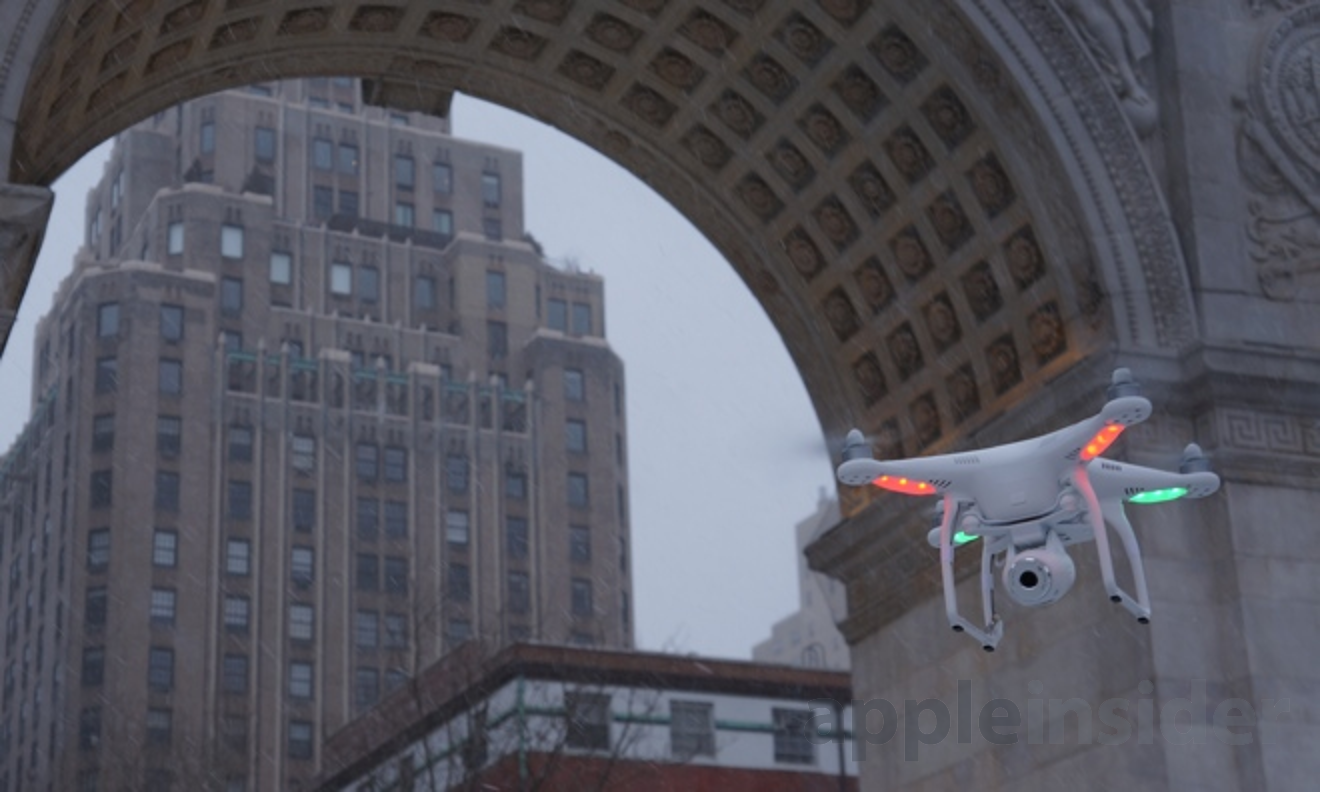
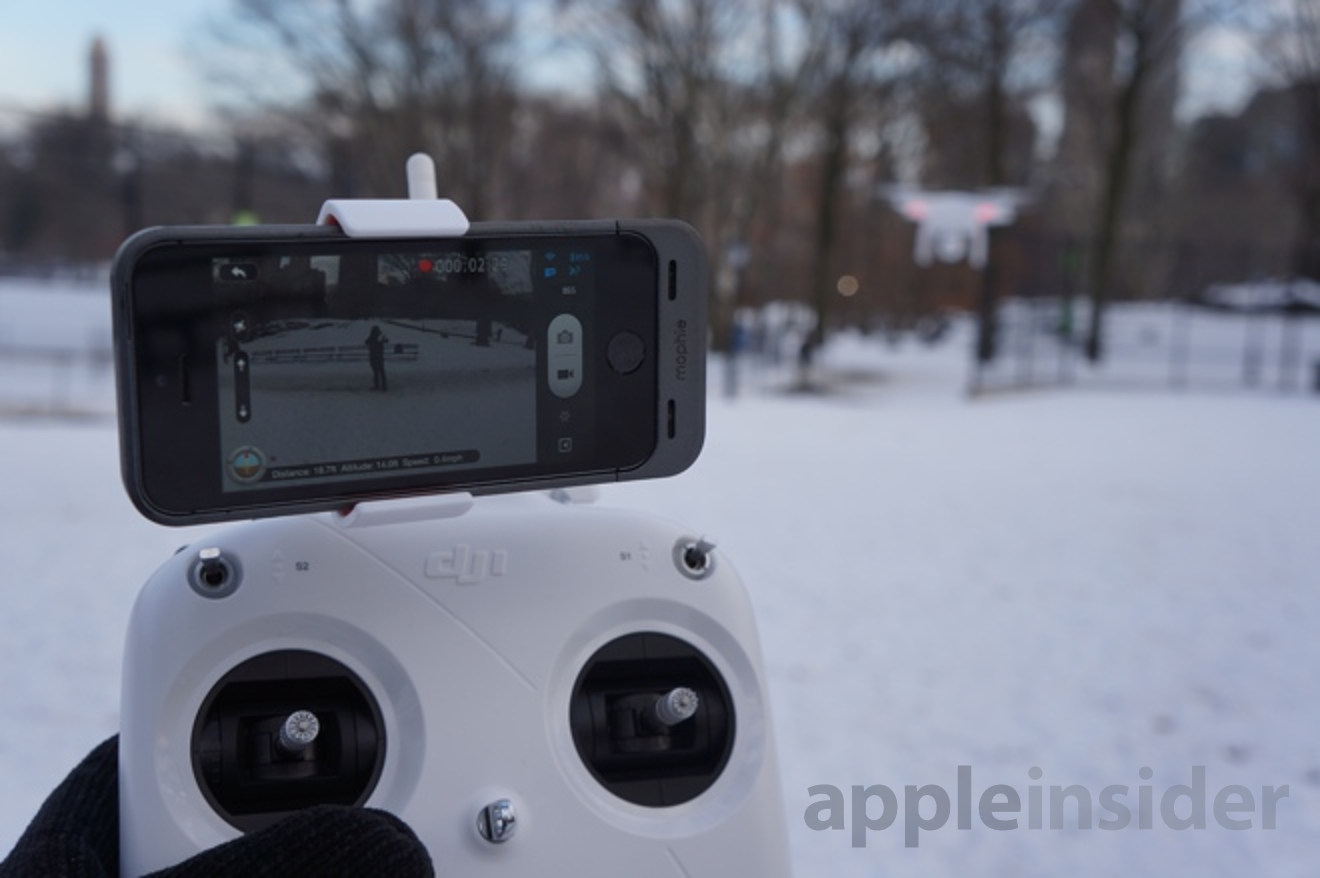
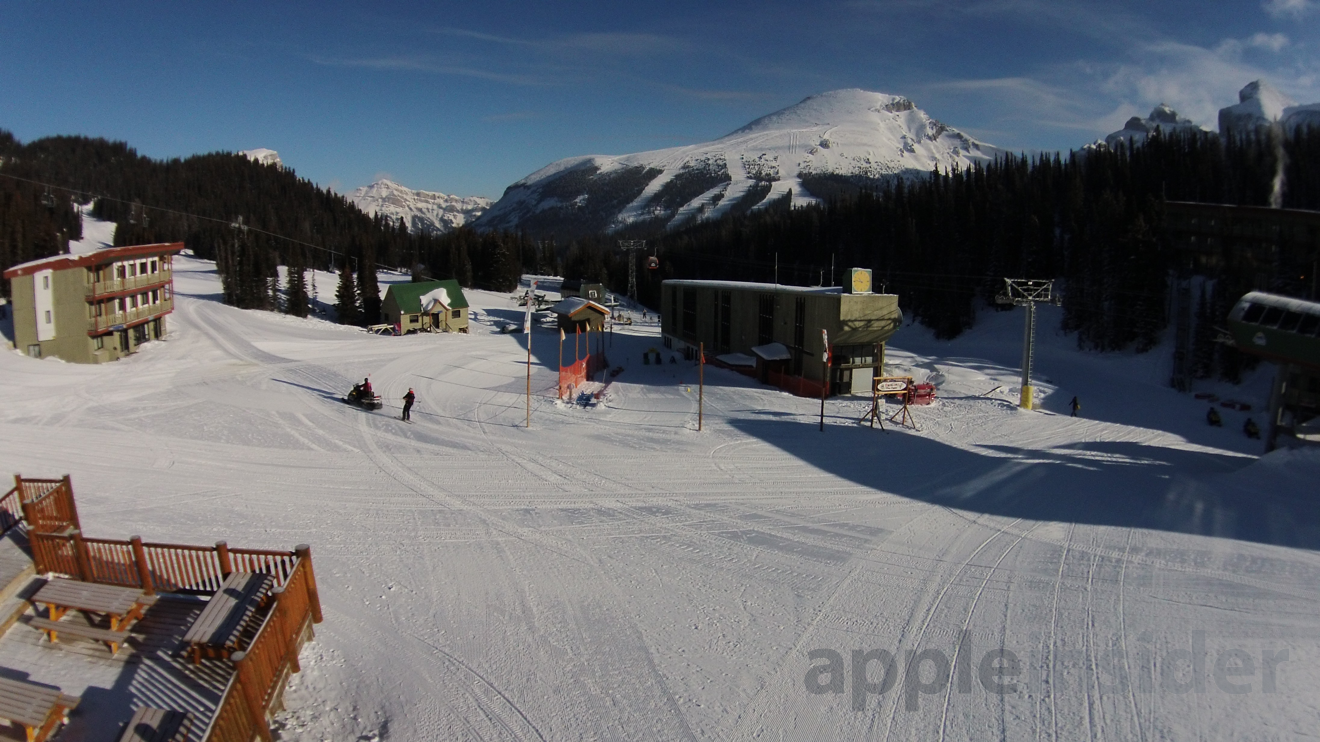


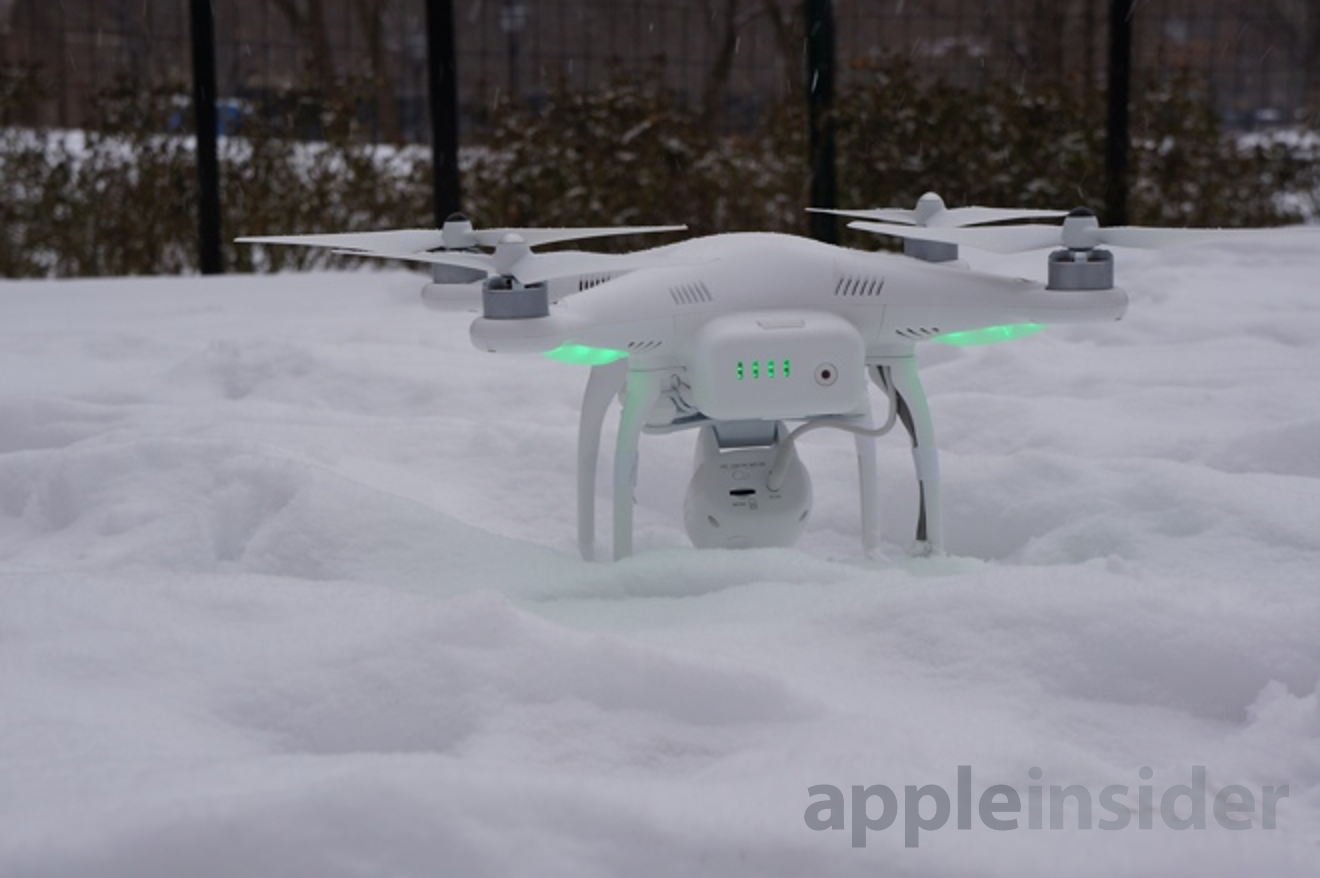
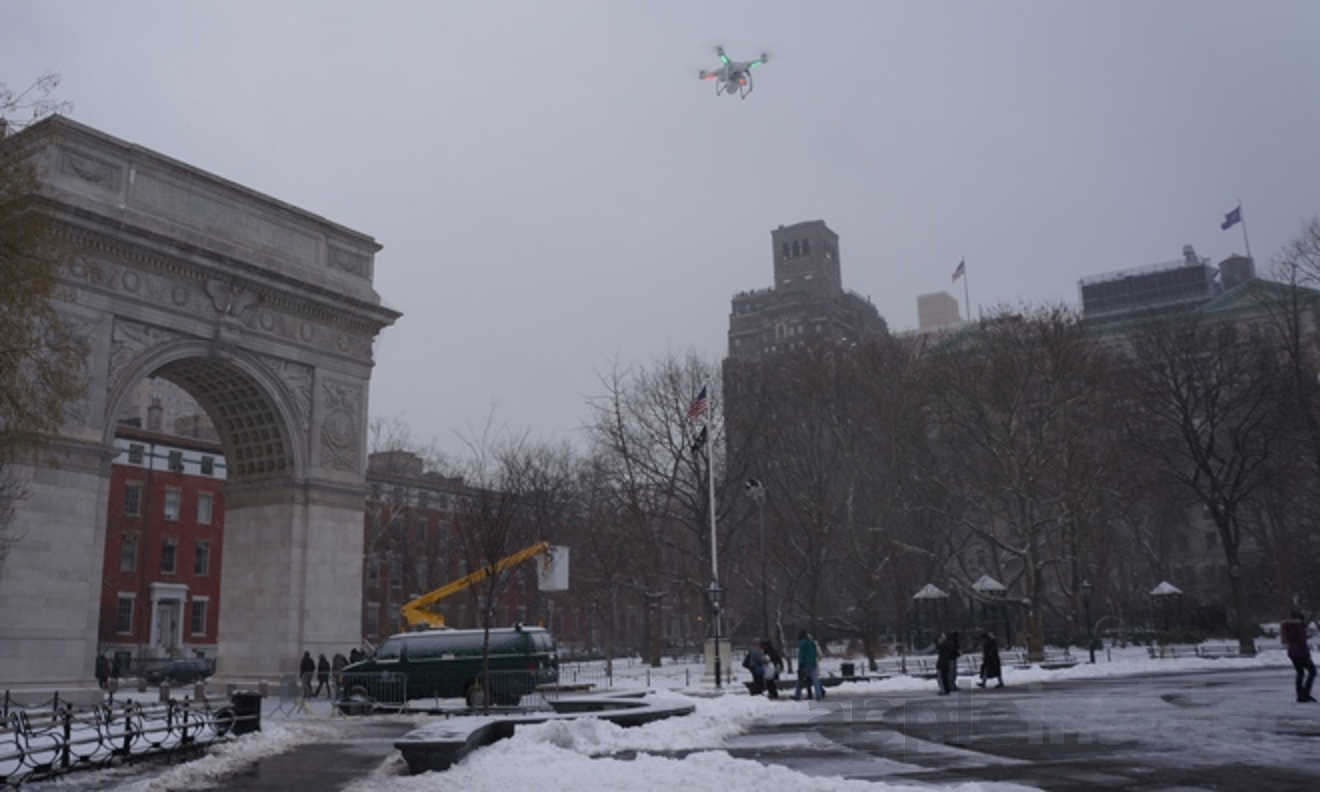
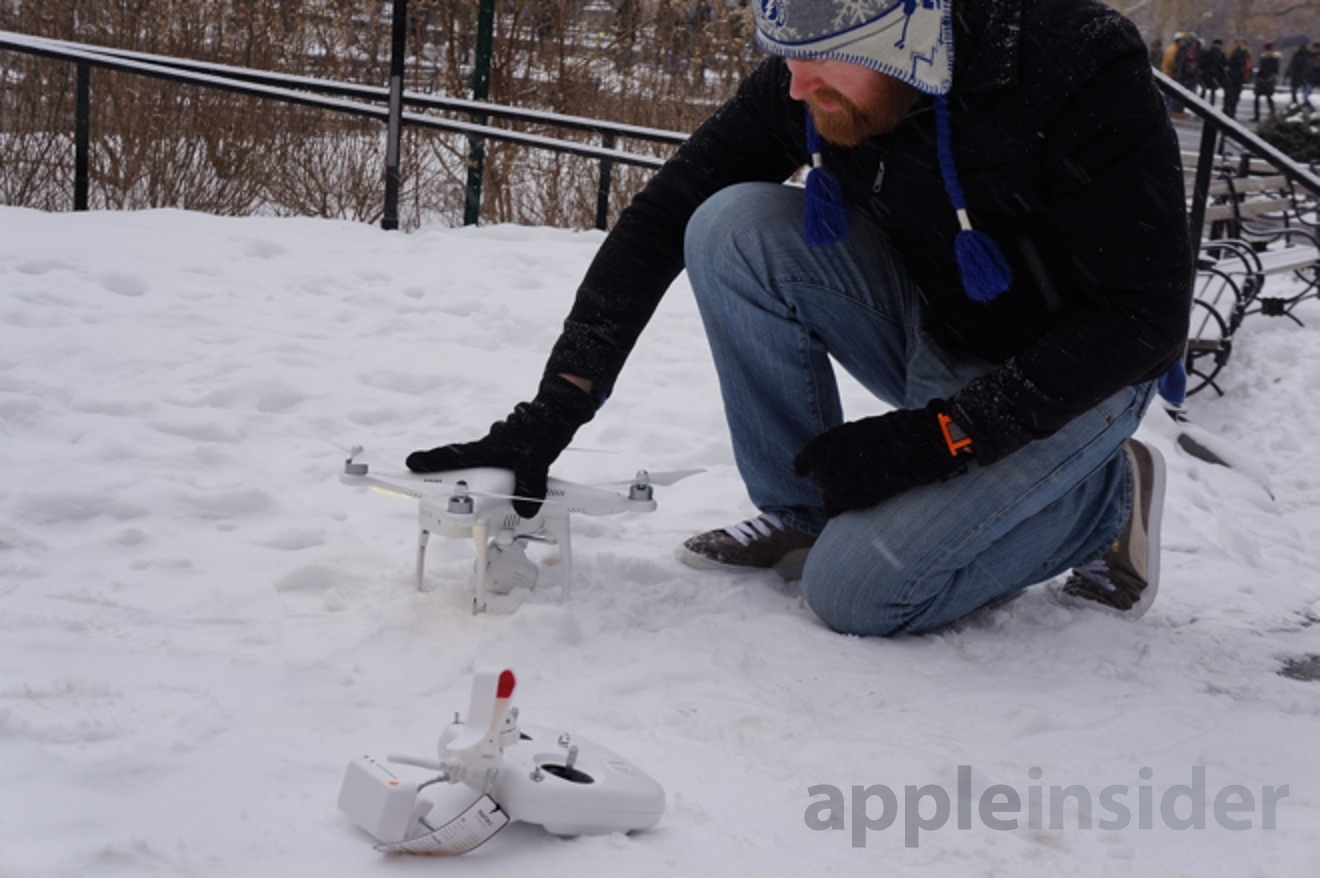


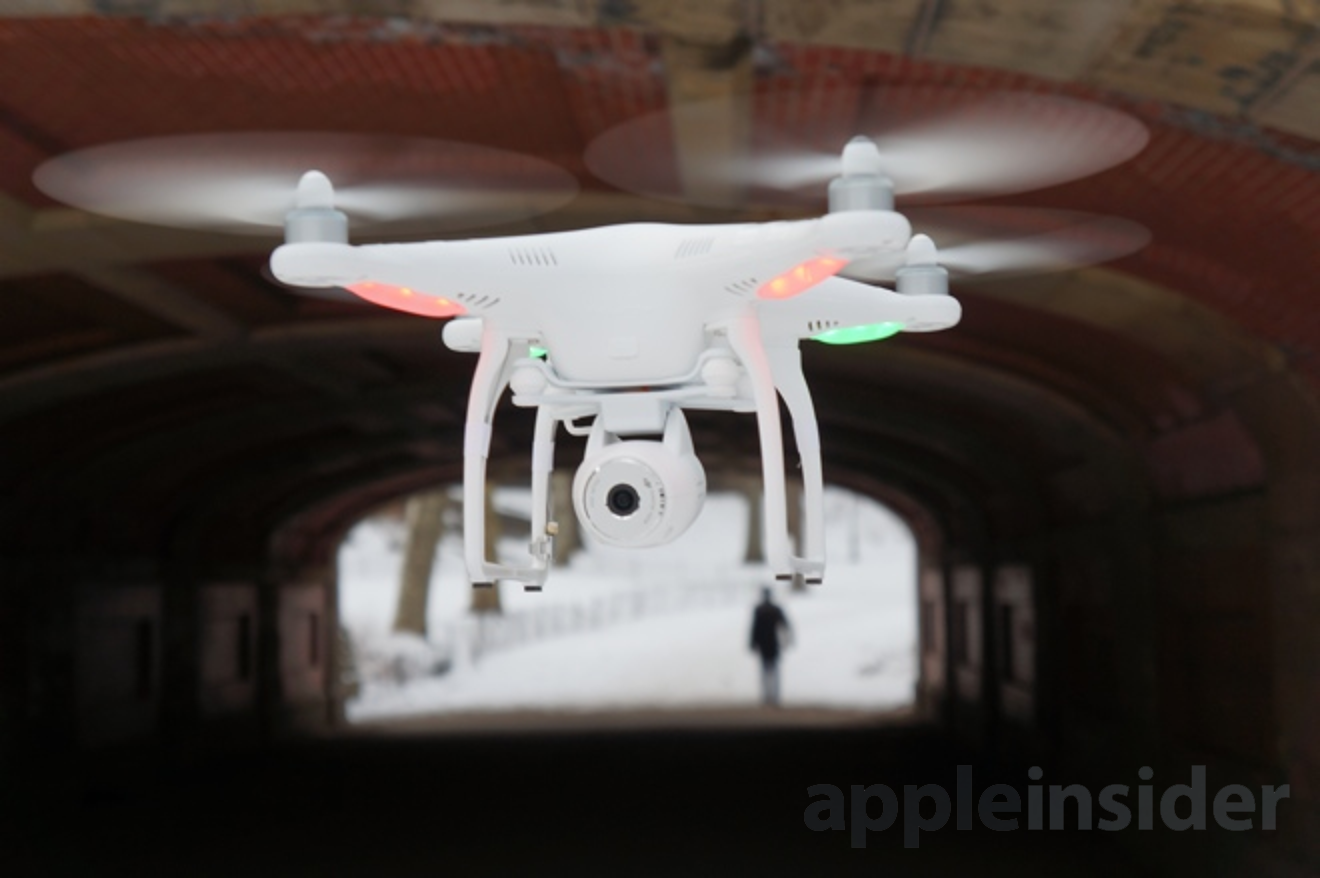








-m.jpg)






 Wesley Hilliard
Wesley Hilliard
 Malcolm Owen
Malcolm Owen
 Andrew Orr
Andrew Orr
 William Gallagher
William Gallagher
 Sponsored Content
Sponsored Content
 Christine McKee
Christine McKee

 Thomas Sibilly
Thomas Sibilly






62 Comments
Pull! BOOM!
Vision did not perform as well in low-light situations as a GoPro Hero3+ Black Edition.
Two possible solutions:
1. GoPro could add a video-out port to a future model that the Vision quad-copter could use.
2. GoPro could buy DJI.
Have they fixed the battery issue where the unit just drops out of the sky without warning? Wanted to get one, but watching a $1200 toy drop into the ocean isn't really fun.
[quote name="quinney" url="/t/164926/review-dji-phantom-2-vision-a-high-end-iphone-compatible-flying-camera-drone#post_2488324"]Pull! BOOM![/quote] C'mon..man up ..."MARK"...jus go for the high house, it's a high flyer ; > /
When I saw the videos, I thought that the one area in which it falls down in is the aerial footage. It's constantly jerky and quickly becomes wearing to watch. To that extent, it's an expensive toy. I'm sure it's great fun to play with.